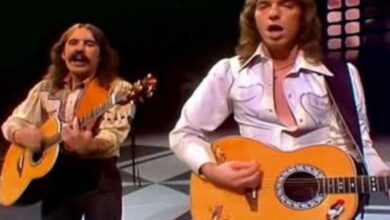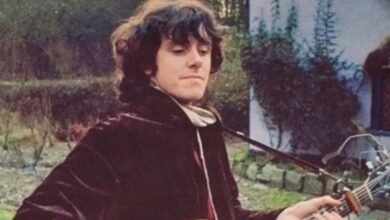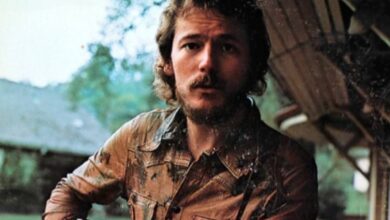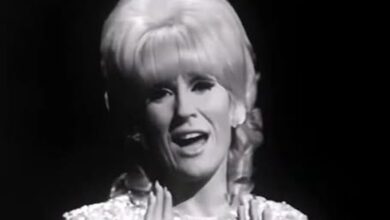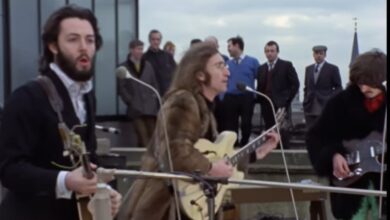The Everly Brothers’ “Cathy’s Clown” Ushers in a New Era of Pop: Chart Triumph, Crossover Appeal, and Lasting Legacy (1960)
When “Cathy’s Clown” hit airwaves in 1960, it was clear something transformative was happening in pop music. Released by the Everly Brothers at the dawn of a new decade, the song quickly rose to the top of the Billboard Hot 100, where it remained for five consecutive weeks—a remarkable feat at a time when the music world was brimming with innovation and competition. Its success was not just commercial but cultural, signaling the growing power of rock and pop crossover and the changing tastes of a postwar generation eager for fresh sounds and heartfelt stories.
Don and Phil Everly, the duo behind the Everly Brothers, were already seasoned performers by the time “Cathy’s Clown” debuted. Hailing from Kentucky, the brothers had grown up singing in close harmony, their voices blending with a near-telepathic intuition honed during childhood performances on their family’s radio show. Their roots in country and Appalachian folk music set them apart in a landscape dominated by emerging rock-and-roll acts, giving their sound an authentic emotionality that resonated with both rural and urban audiences.
The inspiration for “Cathy’s Clown” was rooted in the universal pain of heartbreak and the sting of public humiliation. Written by Don and Phil themselves, the song’s narrative draws on the image of a man scorned in love, watched and judged by others as he struggles with rejection. The idea, reportedly sparked by real-life experiences and observations, captured a vulnerability that listeners found immediately relatable. It wasn’t just another song about lost love; it was an exploration of dignity, pride, and the wounds left behind when romance fades.
The recording of “Cathy’s Clown” marked a leap forward in production technique. It was the Everly Brothers’ first single for Warner Bros., a major move after their time with Cadence Records. Producer Wesley Rose encouraged the brothers to experiment, leading to a lush, multi-layered sound highlighted by double-tracked vocals—a technique that amplified their signature harmonies and gave the song an ethereal quality. The crisp snare drum, memorable melody, and subtle orchestration brought a sense of drama and grandeur that set the record apart from the stripped-down rockabilly and R&B singles of the late 1950s.
Upon release, the song’s reception was nothing short of sensational. “Cathy’s Clown” shot to number one in the United States and the United Kingdom, making the Everly Brothers the first act to simultaneously top the charts on both sides of the Atlantic with the same single. It held the number one spot on the Billboard Hot 100 for five weeks and sold more than two million copies, quickly establishing itself as the fastest-selling single of the Everly Brothers’ career. It was also nominated for—and later inducted into—several halls of fame, further cementing its status as a classic.
Culturally, “Cathy’s Clown” helped redefine what was possible in pop music. Its seamless blend of country, pop, and rock sensibilities appealed to an ever-widening audience, breaking down barriers between genres and influencing the direction of mainstream music for years to come. The song’s narrative complexity and emotional honesty set a new standard for lyric writing, while the brothers’ vocal interplay inspired countless duos and groups who followed.
The enormous success of “Cathy’s Clown” elevated the Everly Brothers to new heights, propelling them into international stardom. It led to a string of appearances on major television shows, expanded their touring schedule to Europe and beyond, and broadened their already devoted fan base. Their influence spread not just among fans, but also among peers, as artists like the Beatles and Simon & Garfunkel cited the Everlys as direct inspirations in their own work.
In the years following its release, “Cathy’s Clown” left a deep imprint on the pop genre. The Beatles would later credit the song’s vocal harmonies and structure as a blueprint for their own early singles, and its emotional storytelling became a touchstone for generations of songwriters. The song’s success also encouraged other artists to explore richer production styles and to write more introspective, confessional lyrics, helping to usher in a new era of pop craftsmanship.
Notable covers and renditions of “Cathy’s Clown” have surfaced throughout the decades, each adding a unique twist to the classic. Country stars like Reba McEntire put their own stamp on the song, taking it to the top of the country charts in 1989, while countless artists across pop, folk, and rock have paid tribute to its timeless appeal. These interpretations highlight the song’s adaptability and continued relevance in ever-changing musical landscapes.
The early 1960s were a period of both triumph and challenge for the Everly Brothers. While “Cathy’s Clown” brought them enormous acclaim, the pressures of fame and the shifting dynamics of the music business tested their partnership. Yet, the song itself became a source of strength—a reminder of the creative spark that had set them apart and a rallying point in times of uncertainty.
Over the decades, “Cathy’s Clown” has proven remarkably durable. It remains a staple of oldies radio, frequently cited on lists of the greatest pop singles of all time, and continues to introduce new listeners to the Everly Brothers’ harmonies and songwriting prowess. Its legacy is further assured by its inclusion in the Grammy Hall of Fame and its preservation by the Library of Congress as a culturally significant recording.
The innovations of “Cathy’s Clown” also helped shape the evolution of modern music production. Its layered vocals, narrative complexity, and genre-blurring arrangements set the stage for the rise of sophisticated pop throughout the 1960s and beyond. Many artists who have explored similar territory owe a debt to the Everlys’ fearless experimentation and heartfelt storytelling.
In later years, Don and Phil Everly received numerous accolades in recognition of their contribution to popular music. Their influence can be traced in the harmonies of countless bands, and their pioneering use of the studio as a creative instrument set a precedent for decades of musical innovation. “Cathy’s Clown,” in particular, is often singled out as the pinnacle of their artistic achievement.
Ultimately, “Cathy’s Clown” endures because it speaks to the human experience in all its complexity—the pain of heartbreak, the desire for dignity, and the resilience required to move on. The song’s blend of vulnerability and craftsmanship has resonated with listeners across generations, ensuring its place in the canon of pop music history.
For the Everly Brothers, “Cathy’s Clown” was not just a hit single; it was a transformative moment that redefined what they—and pop music—could be. Its impact is still felt today, both in the echoes of modern pop and in the continued admiration of those who treasure its haunting melody and poignant lyrics. In the story of American music, few songs have achieved such a perfect union of innovation, emotion, and enduring appeal.
